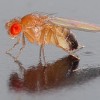Winter Move Over, Spring is Here!
 Seasonal Affective Disorder (SAD) or “Winter Blues”
Seasonal Affective Disorder (SAD) or “Winter Blues”
Spring arrived on March 20th and it was hard to ignore. It was a hot day in Central Park with fellow New Yorkers rushing out to sit in the sun, play ball, or ride their bikes. In my hometown people rushed to the Bluff just to sit in the sand and stare off into the water of Long Island Sound. There were some die hard jet skiers that took the opportunity to get their jet skies into the water (even though the water was an icy 40 degrees). People are craving to be outside; to shake off the feeling that winter has left behind.
Here on Long Island we had a nasty winter. Every time it snowed it wasn’t in inches, but in feet. We had record breaking amounts of snow so when Spring came around the corner, we all rejoiced. For the last few weeks, the temperature has jumped into the 50s and 60s sometimes jumping into the high 80s.
A lot of changes happen once Spring arrives. Migrating birds return. The flowers bloom. The grass begins growing like a weed. But not all the changes are happening in nature. People are changing as well.
Have you ever heard of the winter blues? The winter blues is a set of symptoms closing resembling depression. These symptoms are present in the winter but commonly fade once warmer seasons arrive. Winter blues is another name for Seasonal Affective Disorder, or SAD. SAD is a mood disorder in which people who have normal mental health throughout most of the year experience depression symptoms in the winter months, repeatedly year after year. It has been estimated that 2-9% of adults suffer from SAD.
Those who experience SAD can experience difficulty waking up in the morning, a craving for carbohydrates, a lack of energy, and difficulty concentrating among other symptoms. When the spring comes, it is essentially a role reversal. Those who have been diagnosed with a form of depression in their past have a greater chance of experiencing these winter changes.
There have been some theories on why people suffer from SAD. There is depression, a chronic disorder characterized by depression symptoms all year round. But why have depression only during the winter months and be fine in the spring and summer? The answer may lie in studying other species including our past ancestors.
In many species, activity is diminished during the winter months due to less available food supplies and the difficulties involved in surviving during the cold weather. Several species like bears and box turtles, hibernate during the winter as an extreme way of surviving. A major clue resides in species that don’t hibernate, but still develop changes in their behavior during these less favorable times.
It can be argued that SAD is an evolved adaptation (like our fear of spiders and snakes). This adaptation in humans can be a variant of a hibernation response from an earlier ancestor. Since food was scarce during human prehistory, a low mood would reduce the need for the intake of calories, a good adaptation for the winter months.
If these theories are correct, then Seasonal Affective Disorder would not be a disorder as once assumed. Instead, it would be considered a normal response to colder seasons.
| Print article | This entry was posted by Jennifer Aiello on April 20, 2010 at 4:43 pm, and is filed under G2C Online. Follow any responses to this post through RSS 2.0. You can skip to the end and leave a response. Pinging is currently not allowed. |









